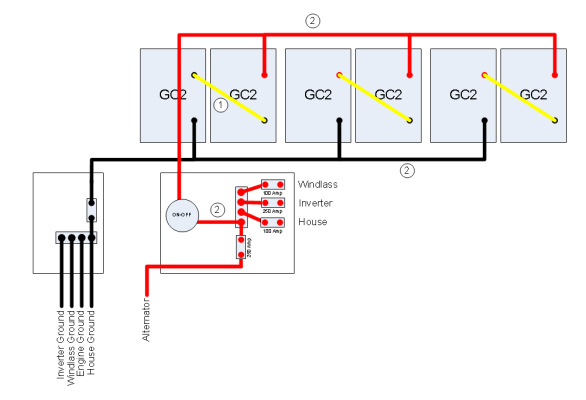hobbystuff
Senior Member
I'm in the process of upgrading our house battery bank to (6) 6V Golf Cart batteries.
My intention is to wire in my inverter (150 Amps), my windlass (80 Amps), and my house panel (80 Amps).
I was going to fuse the entire battery bank with a 400 amp fuse.
The supplier of my batteries has told me to wire up the entire battery bank to the main negative/positive buss with 4/0 cabling.
Another supplier told me to wire it all up with 2/0, but I don't think I believe him. His argument was that the wiring run was all very short and voltage drop wouldn't be much of an issue.
I am not talking about any of the wiring running from the battery bank to the house panel, inverter or windlass - that is already installed and sized appropriately.
Any comments or feedback based on your experience?
My intention is to wire in my inverter (150 Amps), my windlass (80 Amps), and my house panel (80 Amps).
I was going to fuse the entire battery bank with a 400 amp fuse.
The supplier of my batteries has told me to wire up the entire battery bank to the main negative/positive buss with 4/0 cabling.
Another supplier told me to wire it all up with 2/0, but I don't think I believe him. His argument was that the wiring run was all very short and voltage drop wouldn't be much of an issue.
I am not talking about any of the wiring running from the battery bank to the house panel, inverter or windlass - that is already installed and sized appropriately.
Any comments or feedback based on your experience?

